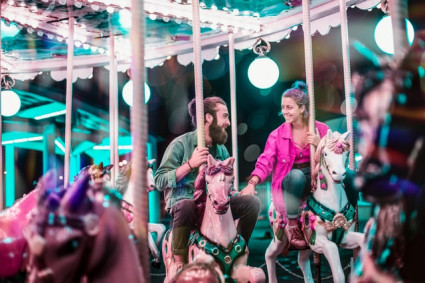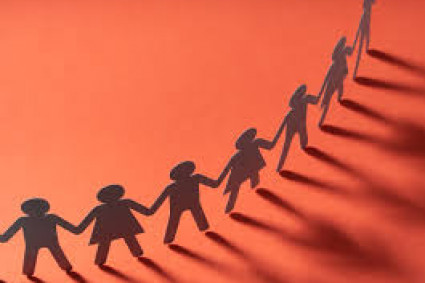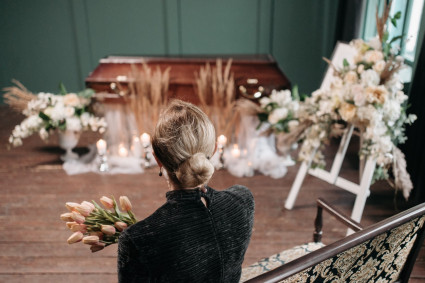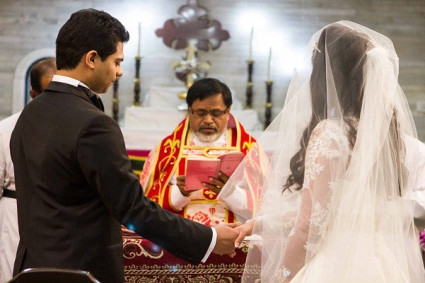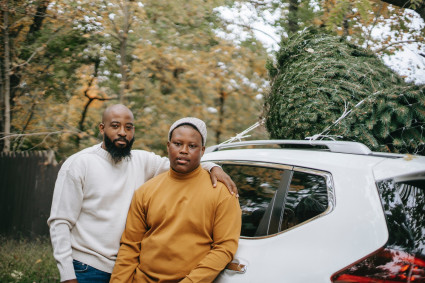Việt Nam is a country that has 54 ethnic groups. Each group has a unique custom and tradition. However, Vietnamese people( or Kinh people) are the group with the highest population.
The Vietnamese, or Kinh, were an ethnic group that formed in the geographical area that is now northern Vietnam and southern China. This is the main ethnic group, accounting for about 86.2% of the population of Vietnam and is officially called the Kinh ethnic group to distinguish it from other ethnic minorities in Vietnam. The main language of the Vietnamese is Vietnamese, a language belonging to the Vietnamese branch of the Austroasiatic language family. Vietnamese people live all over Vietnam and some other countries. The largest Vietnamese diaspora has settled in the United States.
According to the 2009 Population and Housing Census, the Kinh people in Vietnam have a population of 73,594,427 people, accounting for 85.7% of the country's population, residing in all 63 provinces and cities. The provinces and cities with the largest number of Kinh people are: Ho Chi Minh City (6,699,124 people), Hanoi (6,370,244 people), Thanh Hoa (2,801,321 people), Nghe An (2,489,952 people). people), Dong Nai (2,311,315 people), An Giang (2,029,888 people).
Population distribution
In Vietnam
Kinh people are the majority ethnic group in Vietnam, however in some northern mountainous provinces, Kinh people are ethnic minorities: Lao Cai (212,528 people, accounting for 34.6% of the province's population, this province is not has the majority ethnic group), Hoa Binh (207,569 people, accounting for 26.4% of the province's population, Muong people are the majority ethnic group in Hoa Binh, accounting for 63.9%).
Son La (189,461 people), accounting for 17.6% of the province's population, Thai is the majority ethnic group in Son La. Lang Son (124,433 people, accounting for 17.0% of the province's population, this province has no ethnic majority), Ha Giang (95,969 people) , accounting for 13.2% of the province's population, this province does not have an ethnic majority), Dien Bien (90,323 people, accounting for 18.4% of the province's population, this province has no ethnic majority), Lai Chau ( 56,630 people, accounting for 15.3% of the province's population, this province has no ethnic majority), Bac Kan (39,280 people, accounting for 13.4% of the province's population, Tay is the majority ethnic group in this province) , Cao Bang (29,189 people, accounting for only 5.76% of the province's population)
In other coutries
During the French colonial period, some Vietnamese worked as plantation and mining workers in Tan Dao (now New Caledonia and Vanuatu)... There were also some Vietnamese communities in Réunion, Haiti.. . that were founded from exiled patriots. In Siam, China, Laos, Cambodia, there are also quite a few Vietnamese people living. Also during this period, some Vietnamese patriots went to Siam, China, the Soviet Union... to establish revolutionary organizations to avoid persecution by the colonial government in Vietnam.
When the French colonialists left Vietnam in 1954, some Vietnamese emigrated to France, nearly 900,000 people from the North emigrated to the South.
After the Vietnam War, more than 1 million Vietnamese fled and crossed the border. Most of these people resettled in North America, Western Europe and Australia. There is a sizable Vietnamese-American community in the United States.
Origins
According to legend, the first Vietnamese were descendants of a dragon god named Lac Long Quan and a fairy named Au Co. Two people got married, lived together and gave birth to a bag of 100 eggs, which hatched into 100 children. Children born in the same family are called "compatriots" and "compatriots" is the Vietnamese way of saying that all Vietnamese have the same origin.
Anthropology
There are two views on the origin of the Vietnamese people. Some scholars believe that the Vietnamese first moved from the Indonesian archipelago through the Malay Peninsula and Thailand until they settled in the Red River Delta region, by following the paths of the stone tools from the late Pleistocene (600,000-12,000 BC), on the island of Java, peninsular Malaysia, Thailand and northern Burma. These stone tools are believed to be the first human tools used in Southeast Asia. Archaeologists believe that at this time the Himalayas, a mountain range in northern Burma and China, created an icy barrier that isolated the people of Southeast Asia.
Others argue that the first Vietnamese were originally a tribe of Mongol origin in Tibet, who migrated south from the Paleolithic era. This ethnic group settled in the Northern region, upstream of the Red River today and formed the Dong Son civilization. This group of tribes also has great similarities in terms of ethnicity and culture with the ethnic groups in the South of China - which Chinese history also called the Bach Viet community.
Literature
The literature of the Vietnamese has existed for a long time and has been transmitted orally through folktales, folk songs, proverbs... Rich art such as singing, music, sculpture, painting, dance, and performance. .. Every year, according to tradition, the villages hold a village festival with community activities. Around A.D., the Kinh were colonized by the North, so they used Chinese characters, but later created their own script, the Nom script. However, Chinese characters are still the official language used in administration and education. From about the 16th century, missionaries from the West found it necessary to use Latin letters to sign Vietnamese. From there appeared the word Quoc Ngu, which is widely used today. In 1945, 95% of the Vietnamese population was illiterate but by 2010 the adult literacy rate was 97.3%. However, the reading rate of Vietnamese people is quite low at 0.8 books/person/year.
The Vietnamese have a tradition of eating betel nut, smoking tobacco, lime juice, tea, smoking pipe, rice, porridge, sticky rice, shrimp paste, dog meat, and duck eggs. The smoking of tobacco and pipe tobacco was probably after the 16th century, after tobacco plants were imported to Vietnam from the Americas. In addition to material values, Vietnamese people also have spiritual values such as ancestor worship, anniversaries and festivals such as Tet. Popular religions such as Buddhism, Roman Catholicism, Cao Dai...
Costume
In general, Vietnamese people, whether in the North, Central or South, have almost the same way of dressing. Types of clothing such as short shirts worn with wide-legged pants, pants with waistbands or drawstrings. In the old days, men wore long hair, buns, or ax headscarves, etc. At special festivals, they wore ao dai with a pile of scarves. Legs wear wooden clogs.
In ancient times, Kinh women all wore bibs. The skirt is a long skirt with a belt. Conventional hats such as baskets, three-steps... During festivals, women often wear ao dai. Young girls often do ponytails. Traditional jewelry such as brooches, necklaces, earrings, rings, bracelets has a style depending on the region. Southern women often wear Ba Ba shirts with neck styles such as round, heart, mixed with headscarves. Conical hats were the most popular hats for women in ancient times because they were easy to make and provided good sun protection.
Society
According to the millennial tradition, Kinh people live in villages. Many villages come together to form a commune. Each village can have many hamlets. If calculating a hamlet in the North, it is equal to a hamlet in the South. In villages and communes there are rules that everyone has to follow. Villages in the North are often sheltered by planting bamboo or building fortified gates. Each village has a place of common gathering and worship. Some villages have communal houses to worship the village lord, who is considered the village's guardian deity. In ancient times, women were forbidden to go to the communal house.
Economic
Wet rice agriculture is the most prosperous industry. The wet rice civilization has been born for thousands of years and has reached a certain level. The development of agriculture is also thanks in part to the digging of dikes and upland fields. In addition to agriculture, the Kinh also did a number of other occupations such as raising cattle, making handicrafts...
Advertisement
Slope game
Slope game is an Arcade, Casual, and Single-player video game developed by y8. Throughout the game, the player is engaged in a simple but unique challenge with the mission to roll down the slope. The player must travel as far as possible without falling off the edges or colliding with any obstacles along the way. As the player progresses, the player's speed will increase, so keep up the pace and don't let the morale suffer.
Slope Game is an endless space run game. Slope Game is a 3D running game that requires you to drive a ball. Control-friendly, fast-paced, and addictive gameplay. Drive your ball to follow the straight path in space and avoid obstacles as they crash through the race.
The goal is to avoid colliding with obstacles and keep the ball straight onto the falling slopes. In each game, the player will encounter randomized slope platforms, speed boosters, obstacles, and tunnels. Unlike other games, it supports retro graphics to provide the player with a simple yet futuristic aesthetic. A slighter mistake can turn off the adventure, so avoid making any mistakes and go as far as possible to make the best score
Players can play this game in landscape and it's playable on Desktop and Mobile on www.gamepix.com. On mobile devices it is also available on Google Play and Apple's App Store.



